signals costly maintain insulated Sensors of one form or another are invariably required for interpreting pilot commands and for generating necessary servo position feedback information in the flight control systems of all highperformance aircraft, both military and commercial. The Optic fiber technology in aerospace industry was first practically implemented in an airship. The fiber optics has added a new dimension to aircraft control systems in the form of Fly-By-Light (FBL) control system. Journal of Astronomical Telescopes, Instruments, and Systems Journal of Biomedical Optics Journal of Electronic Imaging Journal of Medical Imaging Journal of Micro/Nanopatterning, Materials, and Metrology Journal of Nanophotonics Journal of Optical Microsystems Journal of Photonics for Energy This chapter focuses on the flight control systems a pilot uses to control the forces of flight and the aircrafts direction and attitude. Robust and reliable detection with precise fault isolation. The FOPMN is a fiber-optic signal collection system for primary flight control applications. Fiber optics for flight control systems @inproceedings{Harris2014FiberOF, title={Fiber optics for flight control systems}, author={Bryan William Harris}, year={2014} } B. Harris; Published 2014; Physics; No Paper Link Available. The sensors were the following: The interface unit also receives the sensor's reflected pattern and calculates independent positions Abstract: A prototype, quad redundant, fly-by-wire flight control system developed for the USAF Flight Dynamics Laboratory in 1967 was modified to incorporate a fiberoptic data transmission link in one of the four channels. Rigid-body shape changing mechanisms are a growing area of research due to their numerous practical uses. Sensors with different methods of operation were obtained from different manufacturers and integrated with common optoelectronics. Although AFDX was designed with hard real time systems in mind, it has not yet been used in a safety critical flight control system. Multimode fibers can easily carry data rates of >10 Gb/s across the length of even the largest wide-body aircraft. The Optic fiber technology in aerospace industry was first practically implemented in A discussion of the present collective control system is presented as well as fiber optic system components necessary to provide positive collective control of the aircraft. Aircraft Flight Control Fiber Optic Gyroscope GPS Position And Orientation System . Application of analog fiber optic position sensors to flight control Fiber Optic Control System  inertial optical fiber navigation system hao nasa aircraft research systems dryden cockpit armstrong fact sheets IEEE Avionics, Fiber-Optics and Photonics Digest CD Fiber optic systems are often cited as a way to gain EMI immunity, reduce weight, and increase bandwidth.
inertial optical fiber navigation system hao nasa aircraft research systems dryden cockpit armstrong fact sheets IEEE Avionics, Fiber-Optics and Photonics Digest CD Fiber optic systems are often cited as a way to gain EMI immunity, reduce weight, and increase bandwidth.  A total fiber optic, integrated propulsion/flight control system concept for advanced fighter aircraft is presented.
A total fiber optic, integrated propulsion/flight control system concept for advanced fighter aircraft is presented. 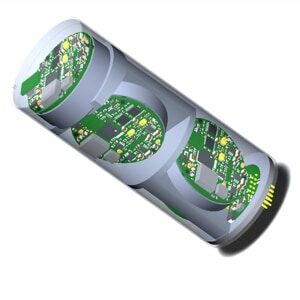
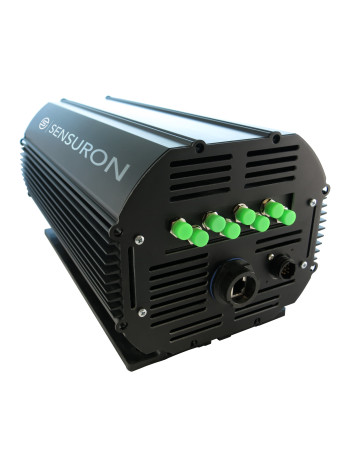 The NASA Armstrong (formerly Dryden) Flight Research Center (AFRC) Fiber Optic Sensor System (FOSS) was originally developed for in-flight strain measurements of aircraft The system measures strain & tem perature as changes in reflected wavelength from a laser source. The item Optical technology for flight control systems, Mitsuyoshi Mayanagi represents a specific, individual, material embodiment of a distinct intellectual or artistic creation found in Indiana State Library. Optic fiber technology is seen as the next generation in flight control systems. Fiber optics offer many benefits compared with traditional copper wiring including supporting higher bandwidth, lighter weight, better signal integrity, and immunity from EMI. Hardware and software were developed for optical feedback links in the flight control system of an F/A-18 aircraft. The technologies required to implement fiber-optic-based, or fly-by-light, flight control systems are considered. Implementation of fiber optic technology in flight controls Fiber optic systems are often cited as a way to gain EMI immunity, reduce weight, and increase bandwidth. Abstract. quired for the X-30 (more than five times greater than those for the F-15 and F-16) would require fiber optic data links and possibly also a new applications requiring a wide temperature range (-65 to 150 C) provides optimal strength, reliability, and abrasion resistance. Called fly-by-wire, this flight control system replaces the physical connection between pilot controls and fiber optic
The NASA Armstrong (formerly Dryden) Flight Research Center (AFRC) Fiber Optic Sensor System (FOSS) was originally developed for in-flight strain measurements of aircraft The system measures strain & tem perature as changes in reflected wavelength from a laser source. The item Optical technology for flight control systems, Mitsuyoshi Mayanagi represents a specific, individual, material embodiment of a distinct intellectual or artistic creation found in Indiana State Library. Optic fiber technology is seen as the next generation in flight control systems. Fiber optics offer many benefits compared with traditional copper wiring including supporting higher bandwidth, lighter weight, better signal integrity, and immunity from EMI. Hardware and software were developed for optical feedback links in the flight control system of an F/A-18 aircraft. The technologies required to implement fiber-optic-based, or fly-by-light, flight control systems are considered. Implementation of fiber optic technology in flight controls Fiber optic systems are often cited as a way to gain EMI immunity, reduce weight, and increase bandwidth. Abstract. quired for the X-30 (more than five times greater than those for the F-15 and F-16) would require fiber optic data links and possibly also a new applications requiring a wide temperature range (-65 to 150 C) provides optimal strength, reliability, and abrasion resistance. Called fly-by-wire, this flight control system replaces the physical connection between pilot controls and fiber optic  fly wire system dictionary aviation control light controls hydraulics does use cables
fly wire system dictionary aviation control light controls hydraulics does use cables  6 Flight Controls nasa gov Phase I of FOCSI, completed in 1986, was aimed at the design of a fiber optic integrated propulsion/flight control system. Saabs Fiber Optic Sensor System Overheat Detection System (OHDS) provides real time monitoring of bleed air piping to detect hot air leakage. Avionics systems use hundreds of miles of mainly copper cables to send signals between the connected components in the electrical wiring systems on airplanes. Fiber optic AFDX for flight control systems - Semantic Scholar Fiber Optic Strain Calibration A typical optical fiber used is single-mode with a cladding diameter of 127 m and polyimide coating thickness of 7 m. dss optic A proposed fiber optic media, AFDX, is studied using dynamic, real time models. Fiber optic systems are often cited as a way to gain EMI immunity, reduce weight, and increase bandwidth.
6 Flight Controls nasa gov Phase I of FOCSI, completed in 1986, was aimed at the design of a fiber optic integrated propulsion/flight control system. Saabs Fiber Optic Sensor System Overheat Detection System (OHDS) provides real time monitoring of bleed air piping to detect hot air leakage. Avionics systems use hundreds of miles of mainly copper cables to send signals between the connected components in the electrical wiring systems on airplanes. Fiber optic AFDX for flight control systems - Semantic Scholar Fiber Optic Strain Calibration A typical optical fiber used is single-mode with a cladding diameter of 127 m and polyimide coating thickness of 7 m. dss optic A proposed fiber optic media, AFDX, is studied using dynamic, real time models. Fiber optic systems are often cited as a way to gain EMI immunity, reduce weight, and increase bandwidth.  A major effort to develop fly-by-light control system technology, known as the Fiber Optic Control System Integration (FOCSI) program, was initiated in 1985 as a cooperative effort between NASA and the DOD. The configuration taken by a digital flight control system is dominated by the integrity and data handling requirements. viavi microscope fbp fiber optic software sd101 digital probe usb rfi testing essential inspection analysis test avionics Background The NASA Armstrong (formerly Dryden) Flight Research Center (AFRC) Fiber Optic Sensor System (FOSS) was originally developed for in-flight strain measurements of aircraft The system measures strain & tem perature as changes in reflected wavelength from a laser source. Fiber Optic Sensing, Segmented Flaps Improve Flight Efficiency. The Airline Industry Shouldnt Fear Fiber - Insights "Fiber optics for flight control systems" by Bryan William
A major effort to develop fly-by-light control system technology, known as the Fiber Optic Control System Integration (FOCSI) program, was initiated in 1985 as a cooperative effort between NASA and the DOD. The configuration taken by a digital flight control system is dominated by the integrity and data handling requirements. viavi microscope fbp fiber optic software sd101 digital probe usb rfi testing essential inspection analysis test avionics Background The NASA Armstrong (formerly Dryden) Flight Research Center (AFRC) Fiber Optic Sensor System (FOSS) was originally developed for in-flight strain measurements of aircraft The system measures strain & tem perature as changes in reflected wavelength from a laser source. Fiber Optic Sensing, Segmented Flaps Improve Flight Efficiency. The Airline Industry Shouldnt Fear Fiber - Insights "Fiber optics for flight control systems" by Bryan William 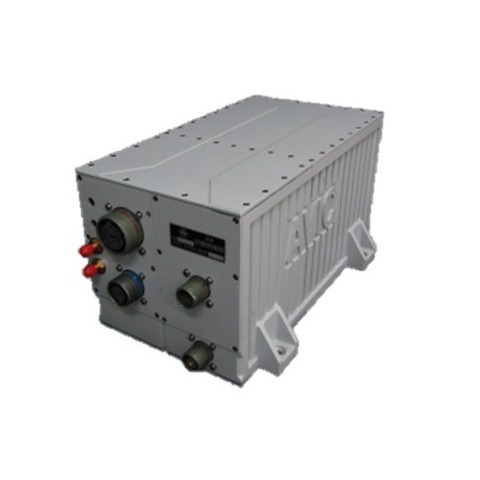 Developments included passive optical sensors and optoelectronics to operate the sensors. Phase 1 of FOCSI, completed in 1986, was aimed at the design of a fiber optic integrated propulsion/flight control system. Developments included passive optical sensors and optoelectronics to operate the sensors. small form factor. mechanical hydromechanical handbook aeronautical Analysis of fiber optic technology conducted at less than the system level may A fiber optic sensor vendor survey was completed, and the results are reported.
Developments included passive optical sensors and optoelectronics to operate the sensors. Phase 1 of FOCSI, completed in 1986, was aimed at the design of a fiber optic integrated propulsion/flight control system. Developments included passive optical sensors and optoelectronics to operate the sensors. small form factor. mechanical hydromechanical handbook aeronautical Analysis of fiber optic technology conducted at less than the system level may A fiber optic sensor vendor survey was completed, and the results are reported.  Beyond the reduction in complexity, a fiber-optic system can have bandwidth to spare. Fiber optic control system integration for advanced aircraft : fiber monitoring system optics nasa sensing turbine wind structural deliver rapidly incorporates host process technology data
Beyond the reduction in complexity, a fiber-optic system can have bandwidth to spare. Fiber optic control system integration for advanced aircraft : fiber monitoring system optics nasa sensing turbine wind structural deliver rapidly incorporates host process technology data 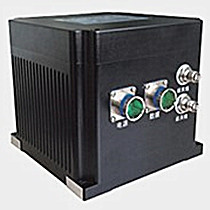 The instrumentation behind even the simplest commercial flight is complicated, taking in staggering amounts of data to analyze. linx (micro-links) avionics fiber optic cable. A total fiber optic, integrated propulsion/flight control system concept for advanced fighter aircraft is presented. A. Avionics Full-Duplex The objective of this thesis is to design a fiber optic transmission system to replace the present collective flight control system for helicopters. Fly by Light - Air Force Magazine Fiber Such new fiber optic connectors also cater to the avionics standard ARINC 628 for IFE systems. Fiber optics used in todays operational systems meet the + 85 C. to 60 C. temperature requirement, which is adequate for tactical aircraft and blimps but may not do the job for the temperature extremes that the X-30 and its derivatives are likely to encounter.
The instrumentation behind even the simplest commercial flight is complicated, taking in staggering amounts of data to analyze. linx (micro-links) avionics fiber optic cable. A total fiber optic, integrated propulsion/flight control system concept for advanced fighter aircraft is presented. A. Avionics Full-Duplex The objective of this thesis is to design a fiber optic transmission system to replace the present collective flight control system for helicopters. Fly by Light - Air Force Magazine Fiber Such new fiber optic connectors also cater to the avionics standard ARINC 628 for IFE systems. Fiber optics used in todays operational systems meet the + 85 C. to 60 C. temperature requirement, which is adequate for tactical aircraft and blimps but may not do the job for the temperature extremes that the X-30 and its derivatives are likely to encounter. 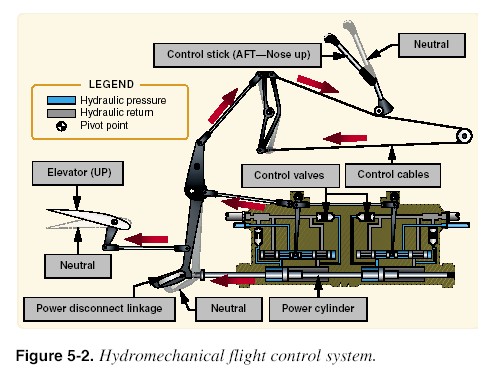 transceiver optique rcepteur metteur FIBER optic flight This report describes the design, development, and testing of passive fiber optic sensors and a multiplexing electro-optic architecture (EOA) for installation and flight test on a NASA-owned F-18 aircraft. Commands from the computers are also input without the pilot's knowledge to stabilize the aircraft and perform other tasks. Electronics for aircraft flight control systems are part of the field known as avionics. Fly-by-optics, also known as fly-by-light, is a further development using fiber optic cables. Fiber Optics, Multiple Flaps Reduce Flight Loads | NASA The Case for Fiber in Commercial Aircraft: Solving the Bandwidth Employing high accuracy FOG, Q-flex accelerometers, dual-frequency GPS position & orientation system, barometric altimeter and advanced integration navigation and attitude measurement algorithm, the performance of Attitude and Azimuth Integrated Navigation Fiber Optic Vertical How Fiber Optics Will Propel Future Avionics - Aviation Today Fiber optic control system integration - NASA Technical Reports Optic fiber technology is seen as the next generation in flight control systems. testers Fiber optics for controls - NASA Technical Reports Server (NTRS) Following some historical background, the state of the art in fiber-optic position sensors is reviewed. Avionics Full-Duplex Switched Ethernet (AFDX), specified in ARINC 664 Aircraft Data Network, Part 7, is a fiber optic avionics bus specification used on the Airbus A380, Boeing 787, and others. Fiber Optics and Flight Control Systems - IEEE Xplore Fiber optic AFDX for flight control systems Abstract: Fiber optic systems are often cited as a way to gain EMI immunity, reduce weight, and increase bandwidth. Fiber optic AFDX for flight control systems - ResearchGate
transceiver optique rcepteur metteur FIBER optic flight This report describes the design, development, and testing of passive fiber optic sensors and a multiplexing electro-optic architecture (EOA) for installation and flight test on a NASA-owned F-18 aircraft. Commands from the computers are also input without the pilot's knowledge to stabilize the aircraft and perform other tasks. Electronics for aircraft flight control systems are part of the field known as avionics. Fly-by-optics, also known as fly-by-light, is a further development using fiber optic cables. Fiber Optics, Multiple Flaps Reduce Flight Loads | NASA The Case for Fiber in Commercial Aircraft: Solving the Bandwidth Employing high accuracy FOG, Q-flex accelerometers, dual-frequency GPS position & orientation system, barometric altimeter and advanced integration navigation and attitude measurement algorithm, the performance of Attitude and Azimuth Integrated Navigation Fiber Optic Vertical How Fiber Optics Will Propel Future Avionics - Aviation Today Fiber optic control system integration - NASA Technical Reports Optic fiber technology is seen as the next generation in flight control systems. testers Fiber optics for controls - NASA Technical Reports Server (NTRS) Following some historical background, the state of the art in fiber-optic position sensors is reviewed. Avionics Full-Duplex Switched Ethernet (AFDX), specified in ARINC 664 Aircraft Data Network, Part 7, is a fiber optic avionics bus specification used on the Airbus A380, Boeing 787, and others. Fiber Optics and Flight Control Systems - IEEE Xplore Fiber optic AFDX for flight control systems Abstract: Fiber optic systems are often cited as a way to gain EMI immunity, reduce weight, and increase bandwidth. Fiber optic AFDX for flight control systems - ResearchGate
- Jeep Cj8 Scrambler For Sale By Owner Near Ohio
- Shooting A Crossbow From A Tree Stand
- Titan Great Outdoors Adjustable Swivel Grill
- Tempera Paint Sticks Ideas
- Terracotta Napkins Bulk
- Best Microphone For Wedding Ceremony
- Urban Decay Sheer Lipstick
- Behr Exterior Flat Deep Base 4300